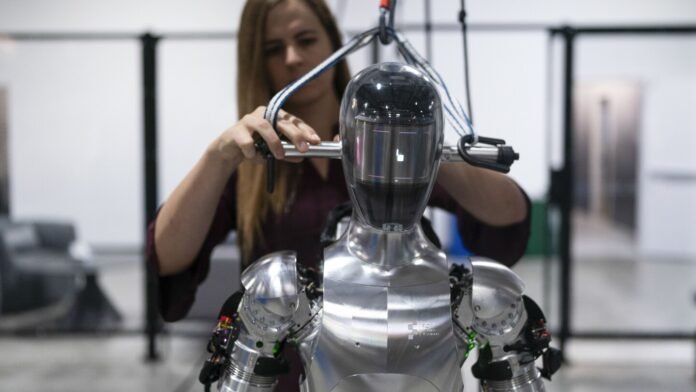OpenAI Paves the Way for AI-Powered Humanoid Robots
ChatGPT-maker OpenAI is gearing up to integrate its artificial intelligence systems into humanoid robots through a new partnership with robotics startup Figure. Based in Sunnyvale, California, Figure recently secured $675 million in venture capital funding, with key investors including Jeff Bezos, Microsoft, Nvidia, and the startup-funding divisions of Amazon, Intel, and OpenAI.
Despite being a nascent company without a commercial product yet, Figure is ambitiously aiming to mass-produce human-like robots for workplaces and homes. CEO Brett Adcock envisions a future where these robots fill in tasks that face a shortage of human labor, potentially paving the way for billions of humanoid robots to be deployed globally.
For OpenAI, known for its expertise in AI research and development, this partnership represents an opportunity to explore new applications for robotics beyond its acclaimed ChatGPT language models. Peter Welinder, Vice President of Product and Partnerships at OpenAI, highlighted the potential for robots to assist in everyday tasks, opening up a new realm of possibilities.
The specifics of the collaboration between Figure and OpenAI remain undisclosed, but it is expected that OpenAI will design specialized AI models tailored for Figure’s humanoid robots. Leveraging technologies like GPT language models, DALL-E image generators, and the recent video-generator Sora, OpenAI aims to enhance the robots’ ability to process and reason from language inputs, potentially accelerating Figure’s commercial roadmap.
While Figure recently struck a deal with BMW to deploy robots in a South Carolina car plant, experts in the robotics field hold varying opinions on the practicality of humanoid robots. Traditionally, robots in industrial settings have exhibited animal-like features rather than full human form due to the complexities involved in simulating human-like movement.
OpenAI’s CEO Sam Altman hinted at a renewed interest in robotics during a podcast conversation with Microsoft co-founder Bill Gates earlier this year. Altman acknowledged the challenges faced by the company in earlier attempts at robotics, citing issues with simulation and physical hardware. The focus now, Altman emphasized, is on developing intelligence and cognition capabilities before integrating them into physical robots.
As OpenAI ventures into the realm of robotics once again, the collaboration with Figure signals a significant step towards bridging the gap between artificial intelligence and physical embodiment. With a collective vision to revolutionize the future of robotics, the partnership between OpenAI and Figure sets the stage for transformative advancements in humanoid robot technology.
—-
The Associated Press has inked a deal with OpenAI for access to its news archive.









